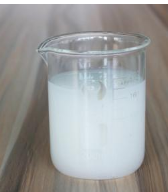Update:Consequences of poor fluidity of water-based coatings:
When the paint is brushed, the flatness of the coating film is lo...
When the paint is brushed, the flatness of the coating film is low, and the brush marks are serious, which affects the gloss, dry covering ability and feel of the coating film.
Reasons for poor fluidity of water-based coatings:
The coating has high viscosity and high thixotropy.
The amount of wetting and dispersing agent is insufficient, and the paint pigments and fillers are poorly dispersed. During storage, the flocs absorb the free-flowing water in the paint, and the free water is wrapped in the flocs by the flocs, reducing the fluidity of the paint.
A large number of alkali-swelling (ASE) or hydrophobically modified alkali-swelling (HASE) thickeners are used. These types of thickeners have a relatively large tendency to post-thickening.
Improve paint flow:
If the viscosity of the finished coating is too high, a wetting agent and an appropriate amount of co-solvent such as ethylene glycol and propylene glycol should be added appropriately.
If the dispersion is unstable and flocculation occurs, the production formula needs to be adjusted, and the amount of wetting and dispersing agent should be appropriately increased to ensure the stable dispersion of pigments and fillers.
The post-thickening caused by alkali swelling (ASE) or hydrophobically modified alkali-swelling and thickening system causes poor fluidity, and the initial viscosity can be appropriately reduced, leaving a certain value range for the viscosity in advance, which is equivalent to the viscosity range caused by the increase in post-thickening .

